#ray galton
Text
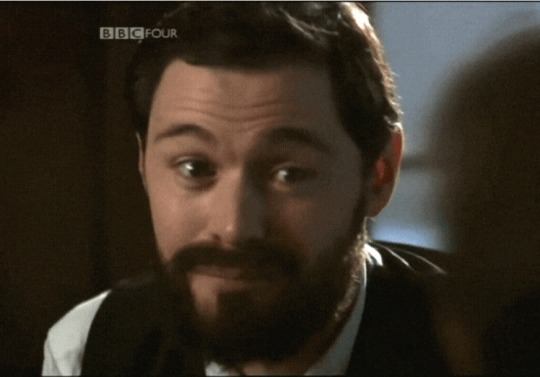
i miss this look
#baby. baby boy.#still cleaning up my phone and found a few ray frames i didn't end up giffing#burn gorman#ray galton#the curse of steptoe#beard burn haunts my dream; he's haunted me since TURN and this did Not Help#he's so damn expressive in this film; idk how to explain it#like there's always the obvious aspect to his stuff but seriously his range of comportment varies so much-#it's Subtle but i absolutely adore it#anyway i just adore ray for how little we had of him#he had a restlessness & vibrancy to him that is almost magnetizing to watch#omfg#shut up ace#man i need a tag for burn now fuck#the burn collection
12 notes
·
View notes
Text
The House Where Terry Nation Created the Daleks Is Now Up For Sale
The House Where Terry Nation Created the Daleks for #DoctorWho Is Now Up For Sale
An important address in the history of Doctor Who, and also British broadcasting as a whole, has gone up for sale with the listing of a fine London townhouse in Orme Court, Bayswater.
The property is the former home of Associated London Scripts (ALS), the legendary agency where comedy greats Spike Milligan, Eric Sykes, Ray Galton, and Alan Simpson shared office space… along with a certain Terry…
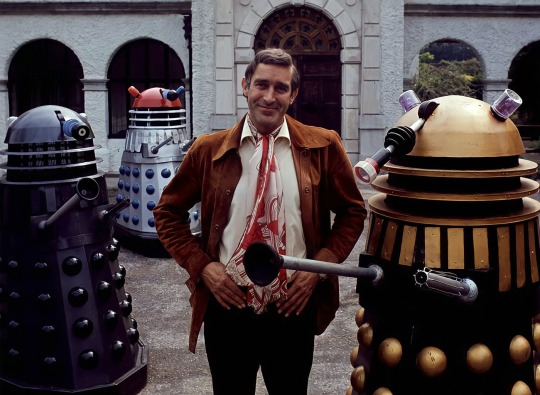
View On WordPress
#Alan Simpson#Associated London Scripts#Beryl Vertue#Daleks#Dennis Spooner#Eric Sykes#Orme Court#Ray Galton#Sherlock#Spike Milligan#Stingray#Terry Nation#Thunderbirds
0 notes
Text

Harry H Corbett, Diana Dors, and Wilfrid Brambell in the second feature film adaptation of Steptoe and Son; Steptoe and Son Ride Again, released in July 1973.
It was directed by Australian-born Peter Sykes (1939-2006) whose other comedy for Nat Cohen-EMI was Frankie Howerd's House in Nightmare Park.
The second Steptoe feature copped a bit of a pasting from the critics, the principal objections being that some of the subtleties of the father-son relationship were lost and the humour was unnecessarily cruder.
It also didn't live up to the box-office success of its predecessor; writers Ray Galton and Alan Simpson speculated that the title was ambiguous and potentially confusing, and may have given the impression to audiences that it was a rerelease of the first Steptoe and Son feature from the previous year.
In 1973, Britain's film industry was described as 'in crisis, due to a combination of declining audiences, a weak dollar and lack of overseas investment. Anglo-EMI was the biggest studio operating in the country and was dubbed 'Britain's one man film industry'.'
#social history#working class history#british cinema#steptoe and son#harry h corbett#diana dors#wilfrid brambell#british culture#british comedy
25 notes
·
View notes
Text




29th August 1999 saw the death of Lew Schwarz, the Scottish TV scriptwriter.
Lew was born in Glasgow on April 16th, 1926, the son of an optician, and educated at the St Aloysius Jesuit College, graduating to the Holyrood Secondary Modern School.
On leaving school he took a job at the Clyde shipyards as a riveter. In 1944 he joined the RAF as a flight engineer and flew Lancaster bombers over Germany. After the war he returned to Scotland, furthering his education at Glasgow University before moving to London in the 1950s. There he took on a job as a taxi driver, married Margaret Glen of Airdrie, and in due time fathered three sons and two daughters.
It was while driving his taxi that Schwarz sold his first few comedy gags. Always a fan of radio-show comedy, he sent his samples to Richard Murdoch, then starring with Kenneth Horne in Much Binding In The Marsh, The Forces Show, and other prominent BBC series. Murdoch bought them, thus starting Schwarz on a career which would soon spread from spare time to full time.
It was through his taxi-driving that Schwarz encountered Spike Milligan, writer and star of The Goon Show. They got to chatting about comedy and Milligan invited Schwarz to come up to the office he and some writer friends used as a base. This was situated over a greengrocer's shop in Shepherd's Bush, not far from the BBC Television studios. Schwarz was delighted to meet Milligan's partners in laughter: Eric Sykes, Johnny Speight, Ray Galton, and Alan Simpson, all great names in comedy creation
Joining the group as a gag writer, Schwarz was taken on as a partner by another big name in comedy, Eric Merriman. Together they wrote their first TV series, Great Scott - It's Maynard! This starred two popular stand-up comedians, Terry Scott, who frequently played an overgrown schoolboy, and Bill Maynard, not yet the chunky character he would become. The show mixed short sketches with situation comedy, aThe Charlie Drake Shownd was a great success. In the 50′s he also wrote episodes of
Lew went on to write a host of other shows, The Army Game, Mess Mates and The Dick Emery Show in the 60′s as well as scripting 3 episodes of The Andy Stewart Show.
In the 70′s he wrote scripts for Harry Secombe, Dave Allen and Norman Wisdom, as well as writing for Carry on Laughing and the popular sitcom The Liver Birds, which Schwarz originated with Carla Lane. Schwartz also penned some mainstream drama like Crown Court, Crossroads and an episode of Space;1999.
Closing his comedy career teaching creative writing at an adult educational college, Schwarz wrote a book, The Craft of Writing TV comedy. He summed up his career thus: ''Writing comedy for television is a very serious business.''
7 notes
·
View notes
Text
The Norwood Builder shows how Sherlock Holmes stories have been at the fore-front of forensics, with its emphasis on fingerprinting.
Fingerprinting has a rich history. Yet, it is very much a science developed in the colonial context.
Sir William Herschel worked in the Indian Civil Services in Calcutta, the-then capital of British India. He saw the potential of fingerprints in authenticating documents, primarily while working in Hooghly, a district neighboring Calcutta.
Henry Faulds too recognised the importance of fingerprints while he was in Japan. He corresponded with Galton and Darwin and ended uo in a controversy with Herschel as to who should be credited as the fingerprinting pioneer. It is after him that the Henry Classification system was named.
However, this is where the story gets interesting. The Henry Classification was developed by two Indian police officers. Much of the work was done was Azizul Haque, along with the very able Hem Chandra Bose. They got high titles from the government, Khan Bahadur for Haque and Rai Bahadur for Bose. Bose later worked in the Anthropometric Society in the world, established in Calcutta. Their system is still used to catalogue fingerprints in English-speaking countries, particularly for archives which haven't been digitised
29 notes
·
View notes
Text

Radio Times, 19 -25 February 1972 with Steptoe and Son, the most famous residents of Oil Drum Lane, getting the cover honours. Wilfrid Brambell (1912-1985) played Albert Steptoe and Harry H. Corbett (1925-1982) his son Harold Steptoe. Written by Ray Galton and Alan Simpson it originally ran from 1962 to 1965 and then returned to the screens in 1970. It did make me laugh but equally I always found it uncomfortable viewing with Harold kept too much of a prisoner by his father.
7 notes
·
View notes
Photo

Top, Ray Johnson, Candy Darling Cast, 1970, Plaster, paint, and eyelashes in plastic carrying case with artist’s label. Cast: 8 × 20 × 13 cm. Bag: 45 × 41 × 8 cm. Via. More. Bottom, screen capture from Babysitter, directed by Monia Chokri, 2022. Via.
See also, Juno Calypso, Whirlpool, 2015, from the series The Honeymoon.
A new app called Hotshot makes use of the power of AI to generate fake photos of you and your pals — whether they agreed to the arrangement or not.
--
Genius has put on an amazing number of masks since the word was used with such effect in antiquity. The term – I hardly dare to call it a ‘concept’, but perhaps one could say ‘cluster of associated ideas’ – maps the fantasies of the age: Athens in its prime, Elizabethan England, Romantic Germany, Fin de Siècle France. But genius is not a serious concept in our times. It has quite lost the allure of the Romantic era. That is because we now measure it, and genius of its nature abhors a measure.
Starting with Galton’s Hereditary Genius, we have gradually made intelligence statistical, with norms. Indeed, the usual IQ tests are so statistical that the questions are designed in such a way that a curve of scores forms a normal distribution with a mean of 100. When the tests were first applied to women, they scored higher than men, with a mean of about 105, so the questions had to be modified to make them harder for women. They were adjusted until the mean score for females was also 100.
Ian Hacking, from Making Up People, for London Review of Books, August 17, 2006.
4 notes
·
View notes
Text
some books what I have accumulated this last year.
not, of course, counting Dylan's collected poems because I already owned that
the love letters of Dylan Thomas
Caitlin, by herself
Letters to Vernon Watkins
Swansea and the Tawe Valley street atlas
Norman Lewis Thomas, The Story of Swansea's Markets
Richmal Compton, Just- William
Delyth Badder and Mark Norman, The Folklore of Wales: Ghosts
Leslie Thomas, This Time Next Week
Alan Bilton, The Known and Unknown Sea
Wynne Lloyd, An Account of the Trade of the Port of Swansea, etc.
Andrew Dulley, The Mystery of William Crach
Christopher Isherwood, Prater Violet
Decalog 2, Mark Stammers and Stephen James Walker
Jessa Maxwell, The Golden Spoon
William Golding, the Scorpion God
Robin Hood According to Spike Milligan
Spike Milligan, Where Have All the Bullets Gone?
Spike Milligan, Goon Show Scripts
Spike Milligan, More Goon Show Scripts
The Essential Spike Milligan
Norma Farnes, The Goons
William Rushton, W. G. Grace's Last Case
Red Dwarf, Log 1996
Red Dward, Primordial Soup
Leslie Charteris, The Saint In The Sun
Harry Secombe, Twice Brightly
Harry Secombe, An Entertaining Life
Jacqueline Heriteau, Potpourris and Other Fragrant Delights
all four dreadful yellow-backed Bessie Bunter books
Rainer Maria Rilke, Duino Elegies
Sir Arthur Quiller-Couch, Selected Short Stories
Rawhide: The Annual
Ray Galton and Alan Simpson, The Day Off
Theodore Sturgeon, More Than Human
Derek Jarman, A Dungeness Notebook
Craig Thomas, Firefox
Persona 5, Comic
1 note
·
View note
Text
Sir William Lawrence Bragg

was an Australian-born British physicist and X-ray crystallographer, discoverer (1912) of Bragg's law of X-ray diffraction, which is basic for the determination of crystal structure. He was joint recipient (with his father, William Henry Bragg) of the Nobel Prize in Physics in 1915, "For their services in the analysis of crystal structure by means of X-rays" an important step in the development of X-ray crystallography.
Bragg was knighted in 1941. As of 2021, he is the youngest ever Nobel laureate in physics, having received the award at the age of 25 years. Bragg was the director of the Cavendish Laboratory, Cambridge, when the discovery of the structure of DNA was reported by James D. Watson and Francis Crick in February 1953.
The composition of X-rays was unknown, his father argued that X-rays are streams of particles, others argued that they are waves. Max von Laue directed an X-ray beam at a crystal in front of a photographic plate; alongside of the spot where the beam struck there were additional spots from deflected rays – hence X-rays are waves. In 1912, as a first-year research student at Cambridge, W. L. Bragg, while strolling by the river, had the insight that crystals made from parallel sheets of atoms would not diffract X-ray beams that struck their surface at most angles because X-rays deflected by collisions with atoms would be out of phase, cancelling one another out. However, when the X-ray beam stuck at an angle at which the distances it passed between atomic sheets in the crystal equalled the X-ray's wavelength then those deflected would be in phase and produce a spot on a nearby film. From this insight he wrote the simple Bragg equation that relates the wavelength of the X-ray and the distance between atomic sheets in a simple crystal to the angles at which an impinging X-ray beam would be reflected.
His father built an apparatus in which a crystal could be rotated to precise angles while measuring the energy of reflections. This enabled father and son to measure the distances between the atomic sheets in a number of simple crystals. They calculated the spacing of the atoms from the weight of the crystal and the Avogadro constant, which enabled them to measure the wavelengths of the X-rays produced by different metallic targets in the X-ray tubes. W. H. Bragg reported their results at meetings and in a paper, giving credit to "his son" (unnamed) for the equation, but not as a co-author, which gave his son "some heartaches", which he never overcame.
Bragg was commissioned early in World War I in the Royal Horse Artillery as a second lieutenantof the Leicestershire battery. In 1915 he was seconded to the Royal Engineers to develop a method to localise enemy artillery from the boom of their firing. On 2 September 1915 his brother was killed during the Gallipoli Campaign. Shortly afterwards, he and his father were awarded the Nobel Prize in Physics. He was 25 years old and remains the youngest science laureate. The problem with sound ranging was that the heavy guns boomed at too low a frequency to be detected by a microphone. After months of frustrating failure he and his group devised a hot wire air wave detector that solved the problem. In this work he was aided by Charles Galton Darwin, William Sansome Tucker, Harold Roper Robinson, Edward Andrade and Henry Harold Hemming. British sound ranging was very effective; there was a unit in every British Army and their system was adopted by the Americans when they entered the war. For his work during the war he was awarded the Military Cross and appointed Officer of the Order of the British Empire. He was also Mentioned in Despatches on 16 June 1916, 4 January 1917 and 7 July 1919.
Hot wire sound ranging was used in World War II during which he served as a civilian adviser.
Between the wars, from 1919 to 1937, he worked at the Victoria University of Manchester as Langworthy Professor of Physics. He became the director of the National Physical Laboratory in Teddington in 1937.
After World War II, Bragg returned to Cambridge, splitting the Cavendish Laboratory into research groups. He believed that "the ideal research unit is one of six to twelve scientists and a few assistants".
University of Manchester (1919–1937)
When demobilised he returned to crystallography at Cambridge. They had agreed that father would study organic crystals, son would investigate inorganic compounds. In 1919 when Ernest Rutherford, a long-time family friend, moved to Cambridge, Lawrence Bragg replaced him as Langworthy Professor of Physics at the Victoria University of Manchester. He recruited an excellent faculty, including former sound rangers, but he believed that his knowledge of physics was weak and he had no classroom experience. The students, many veterans, were critical and rowdy. He was deeply shaken but with family support he pulled himself together and prevailed. He and R. W. James measured the absolute energy of reflected X-rays, which validated a formula derived by C. G. Darwin before the war. Now they could determine the number of electrons in the reflecting targets, and they were able to decipher the structures of more complicated crystals like silicates. It was still difficult: requiring repeated guessing and retrying. In the late 1920s they eased the analysis by using Fourier transforms on the data.
In 1930, he became deeply disturbed while weighing a job offer from Imperial College, London. His family rallied around and he recovered his balance while they spent 1931 in Munich, where he did research.
National Physical Laboratory (1937–1938)
He became director of the National Physical Laboratory in Teddington in 1937, bringing some co-workers along. However, administration and committees took much of his time away from the workbench.
University of Cambridge (1938–1954)
Rutherford died and the search committee named Lawrence Bragg as next in the line of the Cavendish Professors who direct the Cavendish Laboratory. The Laboratory had an eminent history in atomic physics and some members were wary of a crystallographer, which Bragg surmounted by even-handed administration. He worked on improving the interpretation of diffraction patterns. In the small crystallography group was a refugee research student without a mentor: Max Perutz. He showed Bragg X-ray diffraction data from haemoglobin, which suggested that the structure of giant biological molecules might be deciphered. Bragg appointed Perutz as his research assistant and within a few months obtained additional support with a grant from the Rockefeller Foundation. The work was suspended during the Second World War when Perutz was interned as an enemy alien and then worked in military research.
During the war the Cavendish offered a shortened graduate course which emphasised the electronics needed for radar. Bragg worked on the structure of metals and consulted on sonar and sound ranging, they still used the Tucker microphone. He became Sir Lawrence in 1941. His father died in 1942, during which Bragg served for six months as Scientific Liaison Officer to Canada. He organised periodic conferences on X-ray analysis, which was widely used in military research.
After the war he led in the formation of the International Union of Crystallography and was elected its first president. He reorganised the Cavendish into units to reflect his conviction that "the ideal research unit is one of six to twelve scientists and a few assistants, helped by one or more first-class instrument mechanics and a workshop in which the general run of apparatus can be constructed." Senior members of staff now had offices, telephones and secretarial support. The scope of the department was enlarged with a new unit on radio astronomy. His own work focused on the structure of metals, using both X-rays and the electron microscope. In 1947 he persuaded the Medical Research Council (MRC) to support what he described as the "gallant attempt" to determine protein structure as the Laboratory of Molecular Biology, initially consisting of Perutz, John Kendrew and two assistants. Bragg worked with them, by 1960 they had resolved the structure of myoglobin to the atomic level. After this he was less involved; their analysis of haemoglobin was easier after they incorporated two mercury atoms as markers in each molecule. The first monumental triumph of the MRC was decoding the structure of DNA by James Watson and Francis Crick. Bragg announced the discovery at a Solvay conference on proteins in Belgium on 8 April 1953, it went unreported by the press. He then gave a talk at Guy's Hospital Medical Schoolin London on Thursday 14 May 1953, which resulted in an article by Ritchie Calder in the News Chronicle of London on Friday 15 May 1953, entitled "Why You Are You. Nearer Secret of Life". Bragg nominated Crick, Watson and Maurice Wilkins for the 1962 Nobel Prize in Physiology or Medicine; Wilkins' share recognised the contribution of X-ray crystallographers at King's College London. Among them was Rosalind Franklin, whose "photograph 51" showed that DNA was a double helix, not the triple helix that Linus Pauling had proposed. Franklin died before the prize (which only goes to living people) was awarded.
The Royal Institution 1954–1971
In 1953 the Braggs moved into the elegant flat for the Resident Professor in the Royal Institution in London, the position his father had occupied when he died. In 1934 and 1961 Lawrence had delivered the Royal Institution Christmas Lectureand since 1938 he had been Professor of Natural Philosophy in the Institution, delivering an annual lecture. His father's successors had weakened the Institution, so Bragg had to rebuild it. He bolstered finances by enlisting corporate sponsors, the traditional Friday Evening Discourses were followed by a dinner party for the speaker and carefully selected possible patrons, more than 120 of them each year. "Two of these Discourses in 1965 gave him particular pleasure. On 7 May, Lady Bragg, who had been a member of the Royal Commission on Marriage and Divorce (1951–55) and was Chairman of the National Marriage Guidance Council, lectured on 'Changing patterns in marriage and divorce'; and on 15 November, Bragg listened with evident pride to the Discourse on 'Oscillations and noise in jet engines' given by his engineer-son Stephen, who was then Chief Scientist at Rolls-Royce Ltd and later became Vice-Chancellor of Brunel University." He also introduced a programme of highly regarded Schools' Lectures, enlivened by the elaborate demonstrations that were a hallmark of the Institution. He gave three of these lectures on "electricity".
He continued research in the Institution by recruiting a small group to work in the Davy-Faraday Laboratory in the basement and in the adjoining house, supported by grants he obtained. A visitor to the laboratory succeeded in inserting heavy metals into the enzyme lysozyme; the structure of its crystal was solved in 1965 at the Royal Institution by D. C. Phillips and his coworkers, with the computations on the 9,040 reflections performed on the digital computer at the University of London, which greatly facilitated the work. Two of the illustrations of the positioning of amino acids in the chain were drawn by Bragg. Unlike myoglobin, in which nearly 80 per cent of the amino-acid residues are in the alpha-helix conformation, in lysozyme the alpha-helix content is only about 40 per cent of the amino-acid residues found in four main stretches. Other stretches are of the 310 helix, a conformation that they had proposed earlier. In this conformation, every third peptide is hydrogen-bonded back to the first peptide, thus forming a ring containing ten atoms. They had the complete structure of an enzyme in time for Bragg's 75th birthday. He became Professor Emeritus in 1966.
X-ray analysis of protein structure flourished in subsequent years, determining the structures of scores of proteins in laboratories around the world. Twenty eight Nobel Prizes have been awarded for work using X-ray analysis. The disadvantage of the method is that it must be done on crystals, which precludes seeing changes in shape when enzymes bind substrates and the like. This problem was solved by the development of another line Bragg had initiated, using modified electron microscopes to image single frozen molecules: cryo-electron microscopy.
0 notes
Text
Steptoe & Son Heads To York
Steptoe & Son Heads To York
GRAND OPERA HOUSE YORK
Tuesday 18 October
2022 UK TOUR ANNOUNCEMENTTHE STEPTOE AND SON RADIO SHOW
ADAPTED FOR THE STAGE BY JOHN HEWER
BASED ON THE ORIGINAL TV SCRIPTS BY
RAY GALTON AND ALAN SIMPSON
Marking 60 years since the very first broadcast, this new production of the classic BBC TV comedy STEPTOE AND SON embarks on a nationwide tour this autumn.
The cast sees the return of Jeremy…

View On WordPress
0 notes
Text
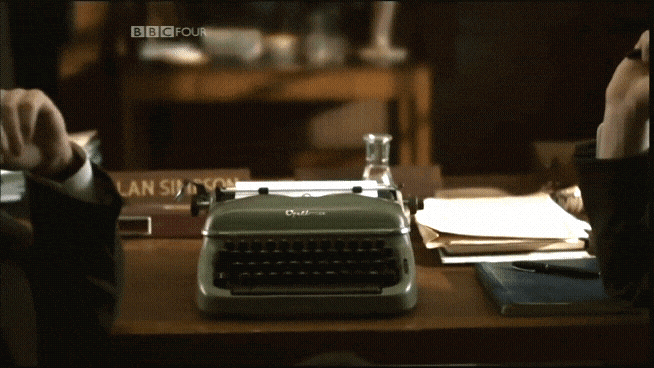



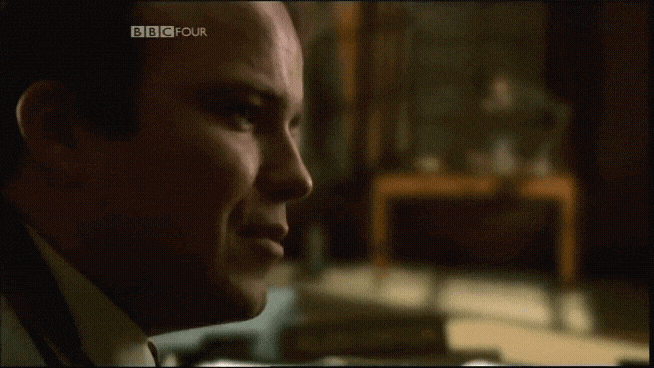

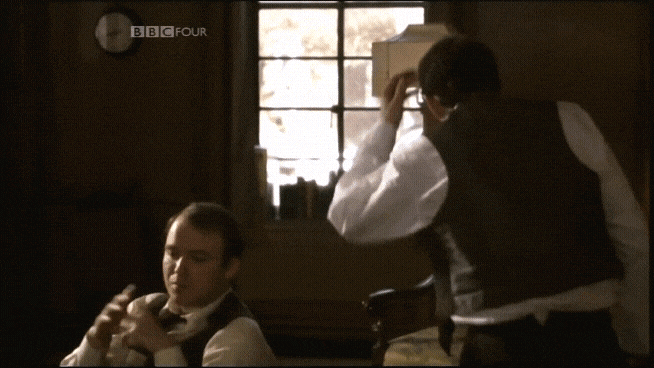


"I saw a rag-and-bone man in the street, on the way over."
"A rag-and-bone man? What an awful premise for a sitcom that would be."
Burn Gorman & Rory Kinnear as Ray Galton & Alan Simpson in The Curse of Steptoe
#burn gorman#rory kinnear#ray galton#alan simpson#the curse of steptoe#my gifs#i actually really loved this movie; i watched it twice already this weekend#like most biopics though this one kind of left a lead like weight in my chest#in the good way#if not for burn i would have eventually watched this for jason isaacs#also phil davis?????#in otger news the beard has grown on me and seeing burn clean shaven again may cause me whiplash#shut up ace#man i need a tag for burn now fuck#period film#1960s#steptoe and son#bbc 4
13 notes
·
View notes
Text



This one's probably just for me and @thisbluespirit but what the hey; Rosemary Leach as Olive Bunclark, the lonely neighbour (and potential love interest) of Harry H. Corbett in The Galton & Simpson Comedy: Never Talk to Strangers (1.3, LWT, 1969).
#Fave spotting#rosemary leach#The Galton & Simpson Comedy#Single play#Galton and Simpson#1969#Never Talk to Strangers#LWT#Harry H. Corbett#Ray galton#Alan Simpson#The Galton and Simpson Comedy is‚ like any anthology‚ a hit and miss affair. G and S were of course old hands at single plays and the like#They'd been regular contributors to the BBC's own Comedy Playhouse‚ which was where Steptoe and Son first appeared‚ and they would dabble#With the format for the rest of their careers. No full series were to come of any of the 6 plays in this LWT set however. Of the 6 this was#Probably my favourite: the strongest script and two brilliant performances. It's also a half hour of comedy thst it's pretty difficult to#Imagine spinning off into a full series (I suppose maybe they weren't all intended as potential pilots then...). Galton and Simpson's key#Weakness as writers was always women: both Hancock's Half Hour and Steptoe and Son were pretty heavily male centered with just a cleaning#Lady in the former and occasional single episode love interests in the latter for women performers. And that seems to have been generally#The limit of G and S when writing women; domestic types and sex objects. It's here in these plays too although it's worth noting that it's#Here in this play and with Rosemary Leach that they get closest to breaking that cycle. She's wonderful‚ as is Corbett in fairness#They play a pair of downtrodden loners who start a sort of love affair by telephone; except that both are lying through their teeth about#Their lifestyles and appearance. Unbeknownst to either they also know each other in real life‚ and the pathos comes from the clear idea#That they are naturally a good fit and would make a fine couple if they'd only each stop pretending on the telephone. That incidentally is#Something G and S always did very well; that slightly downbeat‚ surprisingly moving kind of comedy that tugs at the heart strings#Certainly this was the sole play in the batch to actually have an emotional impact. But then that could as easily be down to two fine#Actors as the writing. I suspect it's a mix of both.
7 notes
·
View notes
Text
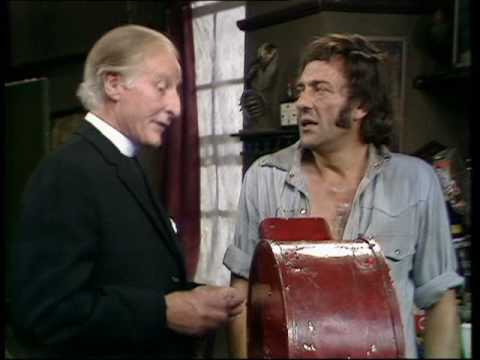


Porn Yesterday was a 1974 episode of Steptoe and Son, from the final series. Harold (Harry H Corbett) picks up an antique ‘What the Butler Saw’ machine on his rounds and brings it home to Oil Drum Lane. He is delightedly running the images of vintage pornography through the viewfinder, until he recognises his father featuring in a scene that also involved a woman and bath full of milk. Suddenly it’s not quite as much fun, and Harold is worried that any scandal might affect his already faltering chances of getting into the golf club.
"What my poor mother must have gone through. She didn’t know about this, did she?"
“Course she did, that was her sister in the bath.”
“Auntie Rose???”
“They were desperate times. Everything we had was in pawn.”
“So were you!”
Although being played largely for broad comedy with some great one-liners, the writers, Ray Galton and Alan Simpson, could still bring out some intense dramatic performances with rapid changes in mood, a technique later used to great effect by John Sullivan in Only Fools and Horses.
Addressing Harold’s disgust, Albert Steptoe (Wilfrid Brambell) recalls the economic conditions of the time, the poverty and starvation, and how desperate young people were being exploited and misled with the offer of a fiver for being in what they believed would be legitimate films to be shown at the Gaumont. At times, the studio audience seems at a loss as to how to react. When Albert is reduced to tears, there is a brief laugh. The audience also laughs when Albert relates that poor Auntie Rose had died of pneumonia two weeks after being immersed in the milk bath.
There’s a happy ending; a deal is done with the local Vicar to make the machine available for the church jumble sale and split the profits. Albert becomes a celebrity in the parish, signing autographs for which the Vicar cheerfully charges two shillings each for church funds.
Steptoe and Son came about as a result of Galton and Simpson being offered a series of ten 30 minute slots for the BBC’s anthology, Comedy Playhouse, with total creative freedom. One episode, The Offer (1962), featured father and son rag and bone men, and was innovative in that actors, rather than variety comics, were cast in the principal roles. Harry H Corbett, at that point seen as a serious dramatic actor with enormous promise, surprised and delighted Galton and Simpson with his interpretation of his role, especially crying real, hopeless tears at the end.
Steptoe and Son ran from 1962-65 and then again 1970-74; a total of 57 episodes. During the early run of the series, Harry H Corbett and Wilfrid Brambell were such big stars they co-headlined the 1963 Royal Variety Performance with the Beatles.
One of the interesting things to note about the series is the intensity of the acting through long, dialogue-heavy scenes, and with very few detectable mistakes. Retakes were frowned upon in those days due to the expense, and so as not to ruin spontaneity with the studio audience. It’s interesting to compare with Dad’s Army, for example, which retains obvious dialogue stumbles, continuity mistakes and goofs right the way through.
It’s also interesting to imagine Steptoe and Son without the audience laughter. (We get some idea from the feature films). Albert takes vindictive delight in derailing any attempts by Harold to live a life of his own, while Albert is, at times, cowering in fear in the face of Harold’s potentially violent temper. The comedic aspects aside, it would actually make a dark, confronting and occasionally frightening kitchen sink family drama.
It was reported that, at the 1964 general election, Labour Leader Harold Wilson attempted to have the Thursday evening screening of Steptoe rescheduled, concerned that potential Labour voters would be staying home to watch it, rather than coming out to vote. The BBC did not change their programming, and Labour won with a four seat majority.
#steptoe and son#social history#bbc comedy#galton and simpson#working class history#british culture#wilfrid brambell#harry h corbett#harold wilson#uk politics
28 notes
·
View notes
Text
29th August 1999 saw the death of Lew Schwarz, the Scottish TV scriptwriter.
Lew was born in Glasgow on April 16th, 1926, the son of an optician, and educated at the St Aloysius Jesuit College, graduating to the Holyrood Secondary Modern School.
On leaving school he took a job at the Clyde shipyards as a riveter. In 1944 he joined the RAF as a flight engineer and flew Lancaster bombers over Germany. After the war he returned to Scotland, furthering his education at Glasgow University before moving to London in the 1950s. There he took on a job as a taxi driver, married Margaret Glen of Airdrie, and in due time fathered three sons and two daughters.
It was while driving his taxi that Schwarz sold his first few comedy gags. Always a fan of radio-show comedy, he sent his samples to Richard Murdoch, then starring with Kenneth Horne in Much Binding In The Marsh, The Forces Show, and other prominent BBC series. Murdoch bought them, thus starting Schwarz on a career which would soon spread from spare time to full time.
It was through his taxi-driving that Schwarz encountered Spike Milligan, writer and star of The Goon Show. They got to chatting about comedy and Milligan invited Schwarz to come up to the office he and some writer friends used as a base. This was situated over a greengrocer's shop in Shepherd's Bush, not far from the BBC Television studios. Schwarz was delighted to meet Milligan's partners in laughter: Eric Sykes, Johnny Speight, Ray Galton, and Alan Simpson, all great names in comedy creation
Joining the group as a gag writer, Schwarz was taken on as a partner by another big name in comedy, Eric Merriman. Together they wrote their first TV series, Great Scott - It's Maynard! This starred two popular stand-up comedians, Terry Scott, who frequently played an overgrown schoolboy, and Bill Maynard, not yet the chunky character he would become. The show mixed short sketches with situation comedy, aThe Charlie Drake Shownd was a great success. In the 50′s he also wrote episodes of
Lew went on to write a host of other shows, The Army Game, Mess Mates and The Dick Emery Show in the 60′s as well as scripting 3 episodes of The Andy Stewart Show.
In the 70′s he wrote scripts for Harry Secombe, Dave Allen and Norman Wisdom, as well as writing for Carry on Laughing and the popular sitcom The Liver Birds, which Schwarz originated with Carla Lane. Schwartz also penned some mainstream drama like Crown Court, Crossroads and an episode of Space;1999.
Closing his comedy career teaching creative writing at an adult educational college, Schwarz wrote a book, The Craft of Writing TV comedy. He summed up his career thus: ''Writing comedy for television is a very serious business.''
9 notes
·
View notes
Video
undefined
tumblr



"Coughs & Sneezes Spread Diseases" (1961)
--HANCOCK with Dame June Whitfield
Highlight from: "The Blood Donor" 06/23/1961
#hancock#tony hancock#hancock's halfhour#june whitfield#the blood donor#comedy classic#coughs & sneezes#galton & simpson#British comedy#midcentury#1960s#post war life#hancock's half-hour#ray galton#alan simpson
14 notes
·
View notes
Video
youtube
Hancock's Half Hour
1 note
·
View note